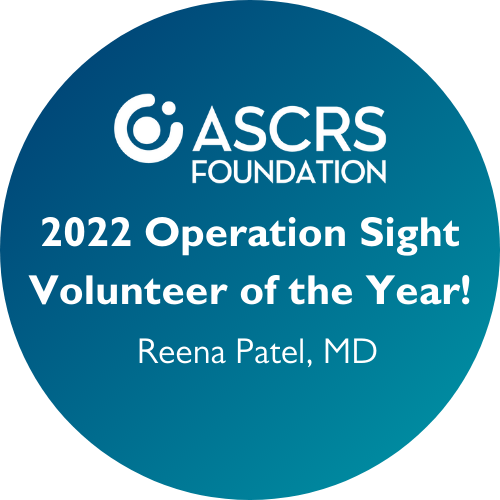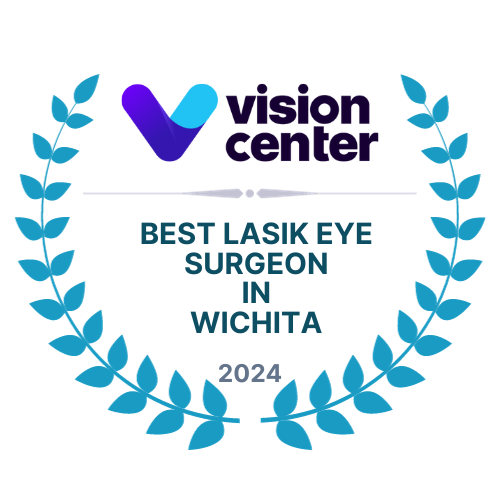Age-related macular degeneration is the leading cause of severe vision loss in Caucasian adults age 65 and older. Macular degeneration medications is a deterioration of the macula, which is a small area in the retina in the back of the eye that allows a person to see fine details clearly. People with macular degeneration usually lose their central vision and may lose the ability to drive, read, and see objects straight ahead. Dr. Reena Patel offers diagnosis of macular degeneration in Wichita, KS, at Wichita Vision Institute.

About Macular Degeneration – Causes, Symptoms and Diagnosis
Macular degeneration is a condition in which the macula gradually breaks down. The macula is responsible for central vision. It enables a person to see fine details clearly. The condition is frequently referred to as age-related macular degeneration (ARMD), because many people develop macular degeneration due to the body’s natural aging process. Macular degeneration can be inherited. Smokers, people with hypertension (high blood pressure) and people with a family history of macular degeneration are at increased risk.
Some of the early symptoms of macular degeneration include seeing straight lines that appear wavy, fuzzy/blurred vision and shadowy areas in your central vision. Macular degeneration can affect a person’s ability to see near and far. It can make some activities like reading or driving very difficult or impossible. Macular degeneration does not cause total blindness. Even with more advanced cases, people can continue to have some useful vision and often can take care of themselves. In some cases, the impact of macular degeneration on vision can be minimal.
A common feature of macular degeneration is deposits that form under the retina called drusen. Drusen themselves usually do not cause vision loss. If large drusen or increased numbers of drusen are present, this usually indicates an increased risk of developing advanced macular degeneration. Other risk factors for developing advanced macular degeneration include an increased number of drusen, prominent dry macular degeneration, and abnormal blood vessels under the macula in one eye (wet macular degeneration).
There are two types of macular degeneration: wet and dry. Nine out of 10 macular degeneration patients have the dry form, in which light-sensitive cells in the macula gradually break down, blurring central vision in the affected eye. Visual loss with dry (atrophic) macular degeneration is usually gradual in nature. The wet form of macular degeneration accounts for about 10 percent of all age-related macular degeneration. With wet macular degeneration, new blood vessels form under the macula and leak blood and fluid, causing the retinal cells to die and creating blurring or blind spots in the central vision. Wet macular degeneration can be rapid and severe.
Macular degeneration can be detected during a comprehensive dilated eye exam. Other tests, such as the Amsler grid test, Humphrey visual field testing, fundus photography, optical coherence tomography, or fluorescein angiogram, may be performed to measure the amount of vision affected, further document macular changes, as well as measure the extent to which the macula has been affected by the degeneration.
Macular Degeneration Treatment
People who have large amounts of drusen, large drusen, or significant vision loss in an eye due to macular degeneration have a high risk of developing late-stage dry macular degeneration or wet macular degeneration. The Age-Related Eye Disease Study 2 (AREDS2) found that people who take a dietary supplement of vitamin C, vitamin E, zinc, lutein, and zeaxanthin can lower their risk by about 25 percent. The dietary supplements did not appear to benefit those people with mild macular degeneration or those with no macular degeneration.
It is important to remember that the supplements are not a cure for macular degeneration, nor will they restore vision which has been lost from the disease. Speak with Dr. Reena Patel to determine if you are at risk for developing advanced age-related macular degeneration and if supplements are recommended for you.
Multiple treatment options are available to treat wet age-related macular degeneration. Special medications can be injected into the eye to prevent the growth of new abnormal blood vessels in the eye. The medications target a specific chemical in your body which is critical in causing abnormal blood vessels to grow in the retina. This chemical is vascular endothelial growth factor (VEGF). Anti-VEGF drugs, including Lucentis and Avastin, block VEGF, thereby reducing the growth of abnormal blood vessels and slowing their leakage.
Another treatment option for wet macular degeneration is photodynamic therapy, in which a drug is injected into a vein on the arm and travels through the body via the blood vessels, including the new abnormal blood vessels in the eye. A laser then shines a laser beam in the eye to activate the drug in the eye’s blood vessels, where it destroys them and slows the rate of vision loss. Treatment can include a laser surgery in which a laser beam is simply aimed at the new blood vessels in the eye to slow or stop leaking blood vessels.
Dr. Patel will advise you of the best treatment option after examining your eyes and diagnosing you with either dry or wet macular degeneration. She will ensure that you have all of the information you need to make an informed decision about your treatment.
Despite all the medical advances available, many people with macular degeneration still experience some vision loss. To help you adapt to lower vision levels, Dr. Patel can refer you to a low-vision specialist or center. There are a wide range of rehabilitation programs and support services available to help people with macular degeneration maintain an active lifestyle.
Vision can be checked daily by using an Amsler grid. This test should be performed on each eye individually with your reading glasses on. The grid should be held approximately 14 inches away from your face. Good light should be available during testing. The directions are listed at the bottom of the Amsler grid. An Amsler grid may be downloaded by clicking on the link listed below:
Amsler’s Chart To Test Your Sight






